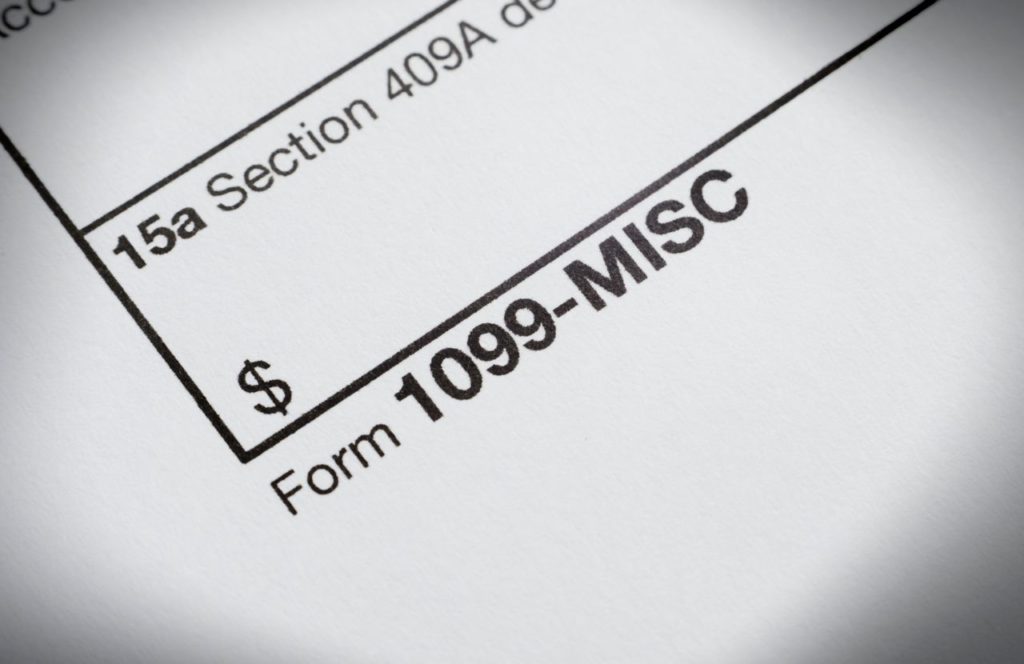When tax season rolls around, the flurry of forms can be overwhelming. But understanding the 1098 vs 1099 forms is crucial to navigating your finances.
In this blog, we’ll dissect these forms, highlighting their roles, differences, and how they impact your tax reporting.
So, buckle up as we demystify these IRS staples, ensuring you’re informed and ready for tax time.
THIS POST MAY CONTAIN AFFILIATE LINKS. PLEASE READ MY DISCLOSURE FOR MORE INFO. Which means if you click on any of the links, I’ll receive a small commission at no additional cost to you.
Table of Contents
- Key Takeaways
- The Role 1098s, and 1099s in Tax Reporting
- What is Form 1098?
- The Purpose of Form 1098 in Reporting Mortgage Interest
- Key Deadlines for Form 1098 Submission
- Exploring Form 1099
- The Various Types of Income Reported on Form 1099
- Comparing Form 1098 and Form 1099
- Navigating Tax Season with Forms 1098 and 1099
- Steps to Take if You Don’t Receive Your Forms on Time
- How Long to Keep Your Tax Paperwork
- Final Thought
Key Takeaways
- Form 1098 is used to report mortgage interest and other expenses, while Form 1099 is used to report various types of non-wage income.
- The IRS requires employers to send out W-2s and credit unions to mail Form 1098 by January 31st each year.
- Taxpayers should contact the payer if they haven’t received an expected Form 1099 by a few days after January 31st, and if they still haven’t received it by February 15th, they should call the IRS for assistance.
- The IRS’s e-filing deadline for Forms 1098 and 1099-INT is March 31, 2024.
- Taxpayers should keep their tax paperwork for three years after filing a return, or six years if they’ve underreported income by 25 percent or more.
The Role 1098s, and 1099s in Tax Reporting
Form 1098s and 1099s play a pivotal role in tax reporting, serving as the primary means by which the IRS tracks various types of income and expenses. While both are essential, they cater to distinct financial activities.

Form 1098 is specifically designed to report mortgage interest paid by a homeowner, directly affecting their potential deductions. On the flip side, Form 1099 captures a broad spectrum of non-wage income, from freelance earnings to dividends, ensuring all taxable income is accounted for.
These forms not only facilitate accurate income reporting by taxpayers but also enable the IRS to cross-check reported income, minimizing discrepancies and ensuring tax compliance.
What is Form 1098?
Form 1098, known as the Mortgage Interest Statement, is a tax form used by homeowners to report amounts of interest and related expenses paid on a mortgage. This form is crucial for homeowners because it can directly affect their eligibility for mortgage interest deductions on their tax returns.

Lenders or loan servicers are required by the IRS to send out Form 1098 to borrowers if their mortgage interest paid during the year exceeds $600.
This form not only provides a breakdown of interest paid but also may include points or mortgage insurance premiums, which could be deductible.
It’s essential to note that receiving this form indicates significant mortgage interest payments, highlighting its importance in the tax filing process.
The Purpose of Form 1098 in Reporting Mortgage Interest
Form 1098, often referred to as the Mortgage Interest Statement, is a critical tool for homeowners come tax time. Its primary function is to document and report the amount of mortgage interest a borrower has paid over the tax year.

This information is vital because it can translate into a tax deduction for the homeowner, potentially lowering their taxable income. The IRS stipulates that mortgage interest is deductible for those who itemize their deductions, making the 1098 form an essential piece of the puzzle.
Lenders are obligated to send out this form if a homeowner’s mortgage interest exceeds $600, ensuring that taxpayers don’t miss out on this valuable deduction. To fully grasp the implications and benefits of the mortgage interest deduction, homeowners may refer to resources like TurboTax’s explanation of tax form intricacies.
Key Deadlines for Form 1098 Submission
When it comes to Form 1098, timing is everything. The IRS regulation mandates that lenders must dispatch this form to borrowers by January 31 each year. This deadline ensures homeowners receive their mortgage interest statement in time for tax season, allowing them to capitalize on deductions potentially.
If this date slips by and you’re without your 1098, it’s crucial to reach out to your lender. Should the form still be missing after a reasonable period, the IRS is ready to assist at 1-800-829-1040. Stay proactive to avoid any hiccups in claiming what could be a significant tax break.
Exploring Form 1099
Form 1099 is a tax document that serves as a record of various types of non-wage income throughout the year. It covers aspects from independent contractor earnings to interest and dividends.

Taxpayers receive this form from entities or individuals from whom they’ve received payments that qualify as taxable income under IRS guidelines.
The importance of Form 1099 lies in its diversity; there are numerous versions tailored to specific income types.
For instance, Form 1099-MISC records payments to independent contractors, while 1099-DIV captures dividend distributions.
Taxpayers need to review each 1099 form carefully to ensure accurate income reporting and avoid potential issues with the IRS.
The Various Types of Income Reported on Form 1099
Form 1099 is a beacon for tax transparency, capturing an array of income that doesn’t fall under regular wages. It’s the IRS’s way to keep tabs on the sundry earnings that pepper our financial lives. The form comes in many variants, each tailored to a specific type of income.
For instance, 1099-INT zeroes in on interest earnings, a common occurrence for savers and investors alike.
If you pocket $10 or more in interest, expect this form to land in your mailbox.
Then there’s the 1099-MISC, a catch-all for miscellaneous income, from rent received to prizes won. It’s a reminder that almost all income streams lead to tax reporting.
For the self-employed or freelancers, 1099-NEC is the form to watch. It documents non-employee compensation, ensuring that independent work is reported accurately.
To get the full scope on these and other variants, a deep dive into the IRS guidelines is invaluable. With each 1099 form serving as a critical piece of the tax puzzle, understanding what each represents is fundamental to a smooth tax season.
Comparing Form 1098 and Form 1099
When dissecting the tax form landscape, understanding the nuances between Form 1098 and Form 1099 is crucial. The former, Form 1098, is laser-focused on homeowners, capturing the mortgage interest they’ve shelled out during the year. It’s a potential goldmine for deductions, directly impacting one’s tax liabilities.
In stark contrast, Form 1099 is the IRSs dragnet for a slew of non-wage income types. From gig economy earnings to investment dividends, 1099 forms ensure all income is on the radar, no matter how it’s earned. It’s about breadth and depth, as these forms consider the wide expanse of taxable income.
Navigating Tax Season with Forms 1098 and 1099
Tax season can be a labyrinthine process, but with Forms 1098 and 1099, you can find your way through. These forms are cornerstones for reporting mortgage interest and various income types, respectively. For homeowners, Form 1098 is a beacon, potentially guiding you to valuable tax deductions.
Meanwhile, the 1099 forms are a tapestry that captures the full spectrum of your income.
If you’re expecting these forms, mark your calendar with the IRS deadlines; Form 1098 should arrive by January 31, and Form 1099-INT by March 31 for e-filing. Missing these forms?
Reach out to the issuer promptly or, if needed, seek IRS assistance. For a seamless tax journey, keep these forms at your fingertips and consult a detailed guide for any complexities that arise.
Steps to Take if You Don’t Receive Your Forms on Time
If the calendar shows you’re inching past January 31 and your Form 1098 or 1099 hasn’t shown up, don’t sweat it—yet.
First, give it a few days grace period; mail can sometimes lag, especially during the tax season rush.
If the form is still MIA, get proactive and contact the issuer directly. They can often provide a copy or confirm when it was sent.
Should this step not resolve the issue, your next move is to seek backup from the IRS. They suggest reaching out if you haven’t received an expected form by mid-February.
How Long to Keep Your Tax Paperwork
After you’ve navigated the complexities of tax season, you may wonder about the shelf life of your tax documents. The IRS recommends keeping records for three years from the date you filed your original return or two years from the date you paid the tax, whichever is later.

This timeframe covers the period within which you can amend your tax return to claim a credit or refund, or the IRS can assess additional tax.
However, if you’ve underreported your income by more than 25%, the suggested holding period extends to six years. To ensure you’re up to par with these guidelines, bookmark the IRS’s guidance on recordkeeping.
Final Thoughts
Navigating tax season is smoother when you know the ropes of Form 1098 vs Form 1099.
While 1098s are your beacon for mortgage interest deductions, 1099s are a net for various non-wage incomes. Keep tabs on deadlines, retain documents for the IRS-recommended period, and if in doubt, reach out to the issuer or IRS.
Remember, it’s always a good idea to consult with a tax professional or accountant if you have any specific questions or concerns about your tax situation. They can provide personalized advice and guidance based on your individual circumstances.
With the right knowledge and resources, tax season doesn’t have to be a daunting experience.
Happy filing!
Disclaimer Statement: All data and information provided on this site is for informational purposes only. The Handy Tax Guy makes no absolute representation of the correctness, mistakes, omissions, delays, appropriateness, or legitimacy of any information on this site. **Note: Each client circumstance will vary on a case-by-case basis**



